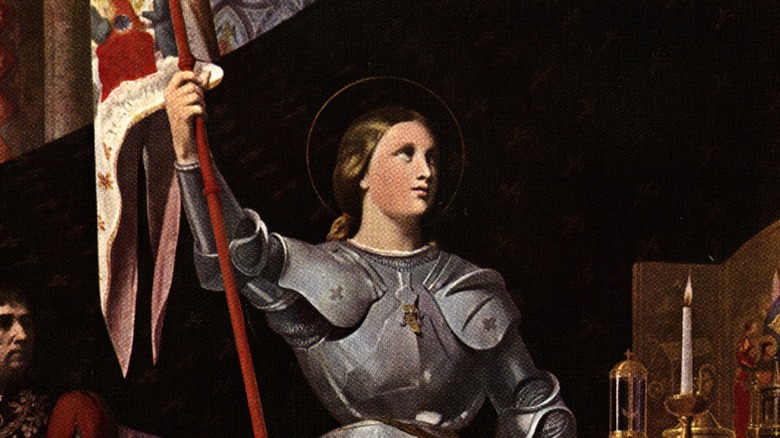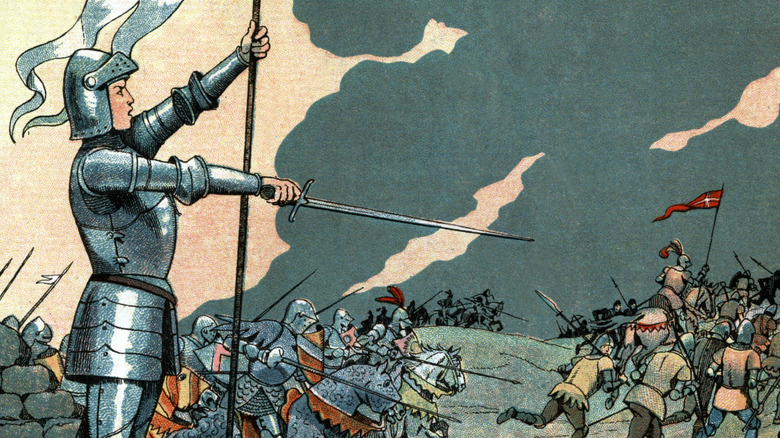Why Some Believe Joan Of Arc Was A Witch
Joan of Arc — or Jeanne d'Arc — is one of the most prominent figures in French history. As Britannica reports, she was born around 1412 in Domrémy, France, the daughter of a farmer. From humble beginnings, she rose to become the nation's savior during the protracted Hundred Years' War against the English. Per History, Joan believed that God charged her with leading the French to victory. This she did at the siege of Orléans, driving the English to retreat and freeing her countrymen from the battle on May 8, 1429. The feat later earned her the honorific the "Maid of Orléans."
Centuries later, on May 16, 1920, Joan was given an even greater honor, officially becoming Saint Joan of Arc, patron saint of France (per Biography). Despite this, though, there are those who believed that Joan was a witch. Naturally, Joan was not so popular among her opponents, the English, and their allies from Burgundy. Eventually, she was captured in 1430 at Compiègne by Burgundian forces who promptly sold her to the English. The ending of her sad story is a familiar one: She was dubbed a heretic, tried, and ultimately burned at the stake. All the while Charles VII, who owed his crown to the young woman, did nothing to secure her release, fearing for his own position.
Both saint and witch?
The 19-year-old Joan of Arc was executed on May 30, 1431. Per Saint Joan of Arc Center, Virginia Frohlick, author of "The Lost Chronicles, The Story Of Joan of Arc," said that the warrior's heart survived the intense flames intact, as did her intestines. Was this a sign of her great piety and righteousness? Church in History suggests that the court that tried her was entirely biased and wanted Joan removed for political reasons rather than for any religious transgression. Live Science states that the holy voices Joan claimed to have heard, saints she claimed to have seen, and seizures she experienced could have been a result of epilepsy (idiopathic partial epilepsy can cause hallucinations). Whatever the truth may be, the facts remain: Joan was retried in 1456, cleared of all charges, and dubbed a martyr, per Biography.
Witchcraft was just one of these charges (of which there were 70, according to Culture Trip). Perhaps a fear among her enemies that her "divine" calling had more demonic origins played a part, but her wearing of men's clothing and her seemingly supernatural influence surely did too. Heresy and witchcraft frequently collided in the medieval period, and this was very convenient for those who wanted to discredit and ultimately remove Joan from the picture.

